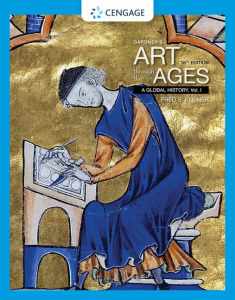
Launching the Imagination 3D
ISBN-13:
9780077773441
ISBN-10:
0077773446
Edition:
5
Author:
Mary Stewart
Publication date:
2014
Publisher:
McGraw Hill
Format:
Paperback
224 pages
Category:
Decorative Arts & Design
FREE US shipping
Book details
ISBN-13:
9780077773441
ISBN-10:
0077773446
Edition:
5
Author:
Mary Stewart
Publication date:
2014
Publisher:
McGraw Hill
Format:
Paperback
224 pages
Category:
Decorative Arts & Design
Summary
Launching the Imagination 3D (ISBN-13: 9780077773441 and ISBN-10: 0077773446), written by authors
Mary Stewart, was published by McGraw Hill in 2014.
With an overall rating of 4.0 stars, it's a notable title among other
Decorative Arts & Design
books. You can easily purchase or rent Launching the Imagination 3D (Paperback) from BooksRun,
along with many other new and used
Decorative Arts & Design
books
and textbooks.
And, if you're looking to sell your copy, our current buyback offer is $0.62.
Description
Launching the Imagination treats design as both a verb and a noun―as both a process and a product. Design is deliberate―a process of exploring multiple solutions and choosing the most promising option. Through an immersion in 3D concepts, students are encouraged to develop methods of thinking visually that will serve them throughout their studies and careers.
Building on strengths of the previous four editions, Launching the Imagination, 5e, is even more:
- Concise. Every sentence has been refined, so that maximum content can be communicated as clearly and concisely as possible.
- Colorful. In addition to full-color throughout the book, the writing is livelier than that in most textbooks. Analogies are often used to expand communication, and every visual example has been carefully selected for maximum impact.
- Comprehensive. LTI is the only foundational text will full sections devoted to Critical and Creative Thinking and to Time-based Design. Photo program is global, represents a myriad of stylistic approaches, and prominently features design and media arts as well as more traditional art forms.
- Contemporary. Over half of the visual examples now represent artworks completed since 1970.


We would LOVE it if you could help us and other readers by reviewing the book
Book review

Congratulations! We have received your book review.
{user}
{createdAt}
by {truncated_author}



